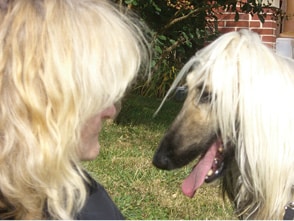To begin with, social media looked like a blessing. People welcomed the ability to connect with people at a distance, no longer limited by the city they lived in or even the country in which they lived.
Until the 1990s, there was no such thing as e-mail and there was no such thing as social media. I was thinking about this the other day when I posted a question to Facebook, asking people what they thought were the important issues facing the dog world today. I was expecting a variety of answers that would cover topics which are generally discussed. Instead, it was like people were living in a little bubble, unconnected to those on the outside.
For my dog show friends, that bubble was the dog “show” world as it is in the United States. There was no mention of legislation or what was happening in Europe, except from a friend in Denmark. Instead, the focus was on decreasing dog show entries, with little relevance given to the overall decrease in the number of dogs registered with AKC. People gave their personal viewpoints and agreed with each other that the major causes were the economy, the high cost of entry fees, the lack of grooming space, and problems with parking. Then they continued on about bad judging and dog show politics. It was as if they had no idea what was going on outside of their own little private community.
How did this happen now that we are supposed to be so much better connected through social media? This wasn’t the case when e-mail became generally accepted in the 1990s. Back then, people would share information by e-mail and share with each other whatever was happening socially, what was happening at the shows, and even legislative issues. I myself corresponded with people in the US and Canada, Great Britain, Australia, New Zealand, South Africa, and Scandinavia. I have many of those letters today, and one day I will pull them out and start rereading some of them. Today, people prefer to send a short message via Messenger or even a text message of no more than three lines, with words reduced to two or three letters.
With the advent of e-mail groups and lists, we had another way to share with our friends and friends to be. When a person wrote a post for a group or mailing list, the messages would be sent to all subscribers. This gave us a great way to share common issues such as pending legislation that was going to be affecting those of us who were breeders and owners. AKC sent legislative alerts to those who had subscribed to their list, and we would forward them on to share them with people on our mailing lists and groups, ensuring as many people as possible could be made aware of what was happening. We were far better connected back then than we are today. We need to find ways to change this.
When I referred to the dog show world in the past, I meant the world that included show dogs, hunting dogs, herding dogs, working dogs, and dogs that compete in performance activities. This broader concept was missing in the responses to my recent question, and people seem to have forgotten that the biggest threat forever lurking in the background is that of anti-breeder legislation.
This is a worldwide problem, not just in the United States. If one looks at bills such as those presented in Australia, they have been so remarkably similar to those proposed in the US that one might think they all originated from the same team of lawyers, their purpose being to secure legislation that will be detrimental to the purebred dog world. I said several years ago that clubs around the world need to work together and present a united front, and I believe that it is (and will be) more necessary now than ever before. This brings us back to communication leading to co-operation.
So, why have dog show entries decreased? There are many reasons, but it all comes down to simple math. AKC registrations have gone down precipitously. There are fewer breeders who are producing registerable puppies. And when puppy numbers drop, future entries decrease. You cannot increase the numbers if there are no dogs to be entered! People can think what they like about judges, grooming areas, or the price of gas, but it’s basically simple math—you need the dogs and their owners before you can even worry about the rest.
There are fewer breeders now than there used to be, and while people talk a lot about bringing Juniors into the show world, supporting and encouraging them, nobody talks about supporting those who are new to breeding. For too many years now, anyone who has suggested that they would like to breed in the future has had to have very good connections to be “given the time of day.” They have been discouraged, and breeders have been unwilling to sell them a puppy of high enough quality to show or breed.
In many breeds this trend continues today, but we have reached the point where we need to encourage new exhibitors and new breeders. It is time to stop limiting the number of litters by outstanding dogs and bitches (now often bred no more than once in their lifetime) and help newcomers start the right way, with good quality stock, and support them with advice and mentorship.
I was at a party 20 years ago when a successful breeder-exhibitor stated in my presence, “You never sell them your good ones, they have to pay their dues!” Be supportive! Be part of the solution.
Regional clubs, both breed and all-breed, need to be more welcoming to the general public and be willing to offer membership to people who do not (at that point in time) plan on showing a dog. Many pet owners in the past had no intention to show their first dog, but they went to a few shows and then decided to buy another dog that they could show.
Some people like to “belong.” I knew a lady who joined the PTA when her kids were at school. She joined the homeowner’s association and she joined this club and that. She also wanted to belong to a dog club, so I gave her the name of a club in a nearby town. She was appalled. All the club members did was sit around gossiping and complaining, and they didn’t give her the time of day. She would have been the woman who would have handled food and refreshments at the show, and she would have had her kids walk around with raffle tickets or go around the town putting up paper notices on telephone poles ahead of a dog show to encourage visitors.
There are many things that can be done outside of social media. We can go back to basics and use it intelligently. We need to get out of our bubble and look at the world outside, and at the same time encourage others to look in. The public loves to watch dog shows on television. So, when somebody mentions it to you, ask them if they have ever been to a dog show and invite them to go to a local show with you. If someone at the hardware store mentions a new regulation affecting dogs in your county or state, talk to them about it. Communication goes both ways and all forms of it
are important.









